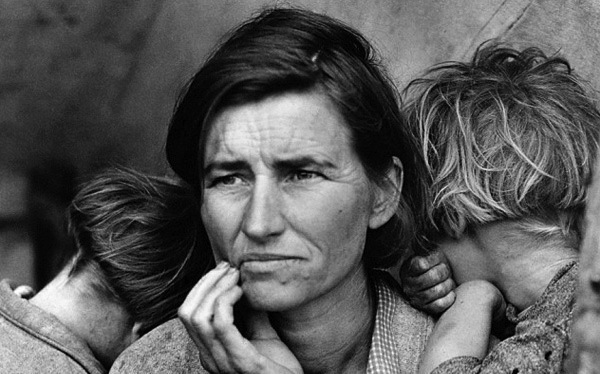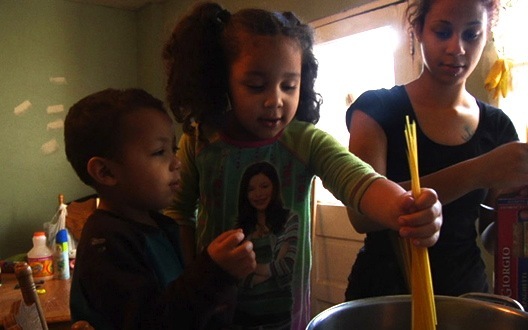4.8.13 The Hunger Games

Do you know this famous photograph by Dorothea Lange? It was taken in 1936 at a camp for seasonal agricultural workers north of Los Angeles. The woman was the 32-year-old mother of seven children, all of them living on frozen vegetables from the surrounding fields and birds that the children killed. They were on the brink of starvation. After returning home, Lange alerted the editor of a San Francisco newspaper to the plight of the workers at the camp, presenting him with two of her photos. The editor informed federal authorities and published an article that included Lange's images. As a result, the government rushed a shipment of 20,000 pounds of food to the camp. It's hard to imagine that such acute hunger could still exist in America, but it does. Today I'm joining bloggers around the nation in drawing attention to the food insecurity that is rampant in our country, in the hope that we can come together to put an end to hunger.

Part of the impetus comes from a new documentary that deals with this issue, A Place At the Table. It's made by Lori Silverbush, the wife of Tom Colicchio (a renowned NY chef who got really famous on TV) and, while it does shine the light on some very important facts, it's not a very in-depth look at this complex subject. (Read this review for a more detailed critique.) But along with harder-hitting films like Food Inc. and Farmageddon, it helps disseminate some very scary facts. Here are just a few:
• 1/2 of all children in this country will be on food assistance at some point in their lives
• 50 million Americans are currently on food assistance
• the cost of fresh produce has increased by 40% — as the cost of fast food has decreased by the same amount
• only 25% of people aged 19-25 are fit enough to serve in our armed forces
The movie lays the blame squarely in Washington, where programs that nearly eliminated the hunger problem in the 1970s have been underfunded since the 1980s. It tells the chilling story of how a recent increase in the free lunch program (a whopping $.06 per meal) was funded with money taken from the food stamp program rather than from agricultural subsidies.

We see into the lives of several families—some urban, some rural, but all suffering from food insecurity—and it's a harsh and grim reality. Access to quality affordable food is so limited. A struggling single mother of two toddlers has to take a bus more than an hour each way from the food desert where she lives to a neighborhood that has a supermarket with fruits and vegetables. People on food assistance must try to get by on as little as $3 a day. Ramen noodles, candy and "snack foods" abound. Processed foods are the cheapest, most available calories and the paradox of being simultaneously obese and hungry suddenly comes into sharp focus. I wept with frustration, rage and pity.
The film's website has a lot of suggestions for getting involved. Those of you with children may be able to pitch in at the school level. If you can help start a community garden anywhere—in a schoolyard, on a rooftop, in an empty lot—do it. It's one way of making fresh food available, and of teaching people to become more self-sufficient. It seems clear that the real source of this problem is the enormous goverment subsidies going to Big Ag, companies like Monsanto and ConAgra that produce commodity crops (corn, wheat, soy). What would happen if those of us who can simply stopped buying all the foods made from those products? The processed cereals, supermarket breads, chips and cookies (all of them grotesquely sweetened with corn syrup and loaded with refined salt) that are empty calories at best and increasingly being proven toxic. Could we make a dent?
I'd love to hear your thoughts on this issue. What would you eat on $3 a day?






6 Comments